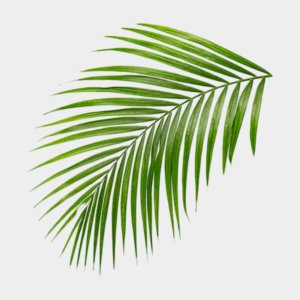
Embracing Nature: Palm Frond Crafts And Decorating Ideas
A palm frond, the iconic symbol of tropical paradise, holds within its delicate greenery a secret to nature’s beauty and resilience. As the epitome of beachside relaxation and lush landscapes, palm fronds play a crucial role in the ecosystem, providing shade, shelter, and sustenance to various creatures. These seemingly simple leaves are a masterpiece of evolutionary design, with intricate patterns and textures that inspire awe and admiration. Join us on a journey to explore the wonders of the palm frond and unravel its hidden mysteries.
The Fascinating World of Palm Fronds: Nature’s Hidden Treasure
Welcome, curious minds, to this enchanting journey into the world of palm fronds! These delicate yet sturdy leaves hold a myriad of secrets and wonders waiting to be discovered. From their lush green appearance to their versatile uses, palm fronds have captivated the hearts of nature enthusiasts for generations. Join me as we delve deep into the realm of palm fronds and uncover the magic they hold within.
The Beauty of Palm Fronds
Have you ever noticed the intricate patterns and vibrant hues adorning palm fronds? These elegant leaves play a vital role in the aesthetics of palm trees, adding a touch of grace to their towering presence. Each frond is a masterpiece of nature, with its unique shape and texture. From the fan-like structure of the fan palm frond to the feather-like appearance of the date palm frond, nature has bestowed these leaves with unparalleled beauty.
One of the most striking features of palm fronds is their vibrant green color, symbolizing vitality and growth. This verdant hue not only enhances the visual appeal of palm trees but also serves a functional purpose. The chlorophyll present in the fronds enables photosynthesis, the process through which plants convert sunlight into energy. So, next time you admire a swaying palm frond, remember that it is not just a pretty sight but a living, breathing entity.
The Anatomy of a Palm Frond
Let’s take a closer look at the anatomy of a palm frond to unravel its secrets. A typical palm frond consists of several parts, each serving a specific function that contributes to the overall health and survival of the palm tree. At the base of the frond, you’ll find the petiole, which is the leaf stalk connecting the frond to the tree trunk.
As we move towards the top of the frond, we encounter the leaflets, which are the individual segments that make up the frond. These leaflets are arranged in a specific pattern, giving each palm frond its unique shape and appearance. The arrangement of leaflets can vary depending on the species of palm tree, with some fronds having a fan-like structure while others exhibit a feather-like design.
One fascinating feature of palm fronds is their ability to self-prune. As a frond ages and reaches the end of its lifecycle, it turns brown and dries up. Eventually, it detaches from the tree, falling to the ground below. This natural process allows the palm tree to conserve energy and resources by shedding old fronds and making way for new growth.
The Versatility of Palm Fronds
While palm fronds are undeniably beautiful, their utility goes far beyond mere aesthetics. For centuries, human societies have utilized palm fronds in a variety of ways, harnessing their strength and flexibility for practical purposes. One of the most common uses of palm fronds is in the construction of shelter.
Native cultures across the globe have long relied on palm fronds to build traditional dwellings such as thatched roofs and walls. The interwoven structure of palm fronds provides excellent insulation against the elements, keeping the interior of the shelter cool in hot climates and warm in cold weather. Additionally, palm fronds are lightweight and readily available, making them an ideal building material for communities living in tropical regions.
Aside from construction, palm fronds have found application in various crafts and artistic endeavors. Skilled artisans can weave intricate patterns and designs using palm fronds, creating beautiful handicrafts such as baskets, mats, and hats. The flexibility of palm fronds allows them to be shaped and molded into a wide range of objects, showcasing the ingenuity and creativity of human hands.
The Ecological Importance of Palm Fronds
Beyond their aesthetic appeal and practical uses, palm fronds play a crucial role in maintaining the ecological balance of their habitats. In tropical forests and coastal regions where palm trees thrive, fronds serve as essential components of the ecosystem, supporting a diverse array of plant and animal species.
One of the primary functions of palm fronds is to provide habitat and food for various creatures. Insects, birds, and small mammals often make their homes among the leafy branches of palm trees, finding shelter and sustenance in the abundance of fronds. Additionally, as palm fronds decompose and fall to the forest floor, they contribute to the nutrient cycle, enriching the soil and supporting the growth of other plants.
Furthermore, palm fronds contribute to the overall health of the environment by helping regulate temperature and humidity levels. The dense canopy of palm fronds provides shade and shelter, creating microclimates that offer respite to a wide range of flora and fauna. By acting as natural air conditioners, palm fronds play a vital role in mitigating the effects of climate change and preserving the biodiversity of their ecosystems.
The Cultural Significance of Palm Fronds
In many cultures around the world, palm fronds hold a special place in traditions and rituals, symbolizing fertility, abundance, and prosperity. From religious ceremonies to festive celebrations, palm fronds are woven into the fabric of society, connecting communities to their natural surroundings and ancestral roots.
One of the most well-known cultural uses of palm fronds is in the observance of Palm Sunday, a Christian holiday commemorating Jesus Christ’s entry into Jerusalem. On this day, worshippers carry palm fronds as a symbol of peace and victory, echoing the biblical account of crowds laying palm branches before Jesus as he rode into the city. The practice of using palm fronds in religious rituals dates back centuries and continues to be an integral part of many faith traditions.
Additionally, palm fronds feature prominently in traditional dances, music, and artwork across cultures, reflecting the deep bond between humans and nature. The rhythmic swaying of palm fronds in ceremonial dances creates a mesmerizing visual spectacle, evoking the spirit of unity and harmony with the natural world. Through these cultural expressions, palm fronds serve as a reminder of our interconnectedness with the earth and all its inhabitants.
In Conclusion
As we come to the end of our exploration into the enchanting world of palm fronds, I hope you’ve gained a newfound appreciation for these remarkable leaves and the myriad ways in which they enrich our lives. From their exquisite beauty to their practical utility, palm fronds embody the resilience and adaptability of nature, inspiring us to cherish and protect the natural world around us.
So, the next time you encounter a swaying palm frond or a thatched roof made of woven leaves, take a moment to marvel at the ingenuity and artistry that nature has bestowed upon us. Let the gentle rustle of palm fronds remind you of the interconnected web of life that sustains us all, and the timeless wisdom that flows through every leaf and branch of the majestic palm tree.
Full Steps Of Making Palm Leaf Fans #handmade #craft #amazing
Frequently Asked Questions
What are the common uses of palm fronds?
Palm fronds have various uses such as crafting decorative items like baskets, hats, and mats. They are also used for roofing, weaving, and as a sustainable alternative to plastic straws in some regions.
How do you properly clean and prepare palm fronds for crafting?
To clean and prepare palm fronds for crafting, first remove any dirt or debris by gently wiping them with a damp cloth. Then, allow the fronds to dry completely before use to prevent mold or mildew growth.
Are palm fronds environmentally friendly?
Yes, palm fronds are considered environmentally friendly as they are a renewable and biodegradable resource. Using palm fronds for crafting and other purposes helps reduce the reliance on non-biodegradable materials.
Final Thoughts
The palm frond, with its versatile uses and symbolic significance, stands out as a unique element of nature. From shelter and decoration to cultural rituals, the palm frond embodies resilience and creativity. Its presence in various aspects of life highlights the harmony between humans and nature. Appreciating the palm frond’s beauty and utility fosters a deeper connection to the environment. In conclusion, the palm frond represents a symbol of sustainability and harmony, inspiring us to value and protect our natural resources.



